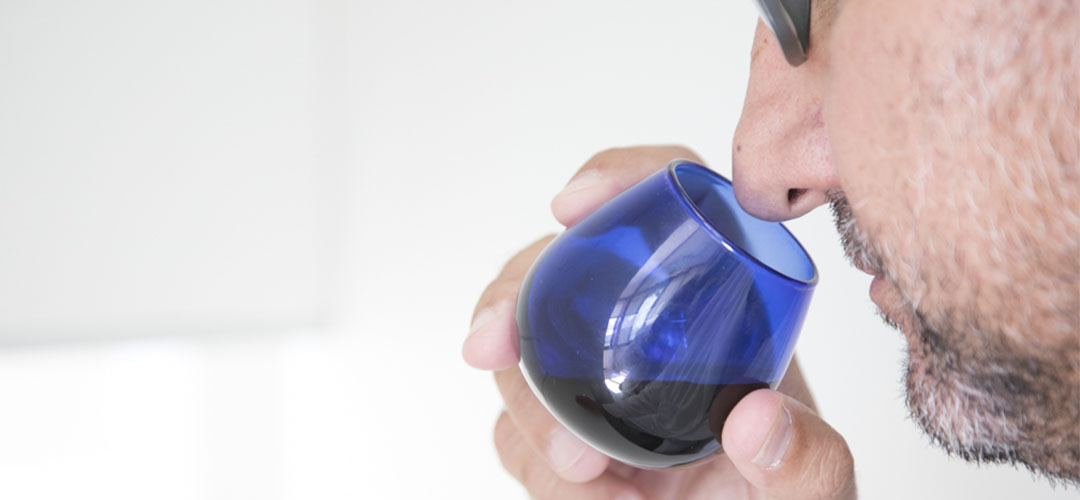The official method of sensory analysis, recognised by law in the European Union, is the panel test developed by the IOC, the Italian Oil Council. This procedure is performed by a group of qualified tasters and allows to identify any defects in the oil as well as to classify the type of oil. The official tasting is split into two steps: the smell test and the taste/smell test. The visual part, is excluded since it could condition the testers’ assessment: in fact, the oil is tasted in dark glasses, which are usually cobalt blue.
Let’s try and taste an extra virgin olive oil together and attempt to recognise and appreciate all of its subtle notes on the nose and palate… Let’s go!
- Pour two tablespoons of oil into a small glass.
- Keep the glass covered and warm the bottom with your hands, so as to release all the volatile substances of the extra virgin olive oil.
- Once you have warmed the bottom of the glass in your hands, bring it to your nose and inhale 2-3 times.
- Remember the scents that you have smelt and try to define them in a positive – or, if applicable, negative – way.
- Once the smell test is complete, move on to the taste test. Take a sip of oil in your mouth and distribute it properly throughout the entire oral cavity, so that all the receptors of the mouth are involved and you can feel the sensations of bitterness and spice. Before swallowing it, suck in air between your teeth 2-3 times (stripping).
- Now try comparing the aromas and flavours you perceived with those you know best, be they pleasant or unpleasant. Trust your senses and express an opinion!
A good-quality extra virgin olive oil has a bouquet that may have hints of fresh olives or olive leaves, freshly-cut grass, green or ripe tomato, artichoke, apple, almond, fresh or ripe fruit. It also tastes somewhat bitter and causes a slight spicy tickle in the throat: these two sensations are entirely positive attributes which are due to the presence of antioxidants.
A bad oil, on the other hand, has no smell of fresh olives, grass or leaves. It is neither bitter nor spicy and smells unpleasant due to the main defects of the oil: for example, it may be rancid (reminiscent of gone-off ham), mouldy, overheated (a smell like olives in brine). In this case, it is possible that the oil was preserved badly, or that it was obtained from poor-quality olives.

For perfect fried food at home, just follow these few simple rules:
- Dry the food thoroughly before frying it;
- Only add salt after frying;
- Change the oil every time you fry;
- Avoid adding fresh oil to used oil: it is much better to change it altogether when it starts to look cloudy and brownish;
- Ensure that the food is properly immersed in the boiling oil: fried food comes out best when it is completely immersed in the oil. Foods should only be immersed in the oil when it has reached a high enough temperature (around 170-180°C). If you do not have a thermometer, you can put a piece of food or cube of bread into the oil: if small bubbles develop around it with a gentle sizzling sound, the temperature is right for frying. When this happens, the boiling oil will form a light crust, stopping the food from soaking up too much oil;
- Don’t try to fry too much food at once, but rather fry an appropriate amount for the volume of the saucepan or deep-fryer;
- Once the food is fried, blot it with kitchen paper to remove excess oil.